
Click the blue text above to follow us
 Eyes
Eyes
1. Symptoms Around the Eyes
Swollen eyelids — Reduced function of internal organs (kidneys, gastrointestinal, heart) leading to water retention in the body.
Dark circles — When blood contains excessive old waste, it causes the area around the eyes to darken (kidneys).
Wrinkles below the eyes — One of the signs of aging.
Sunken eye sockets — Excessive consumption of body energy.
White inner eyelids — Symptoms of anemia.
Yellowish-white small bumps on eyelids — High cholesterol.
2. Eye Conditions
Yellowing of the sclera — Warning sign of liver and gallbladder issues (jaundice).
Blood vessels in the sclera — Liver stress causing blood vessels to engorge.
Eye twitching — Warning sign of weakened immunity.
3. Functional Disorders of the Eyes
Inability to fully close eyes during sleep — Poor gastrointestinal function leading to muscle weakness throughout the body.
Easy eye fatigue — Reduced liver function.
4. Eye Discharges
“Eye crust” — Yellow eye discharge indicates “pus” (inflammation).
Dry eyes — Can easily lead to eye diseases.
Excessive tearing — Weak liver function can lead to excessive tears.
Mouth
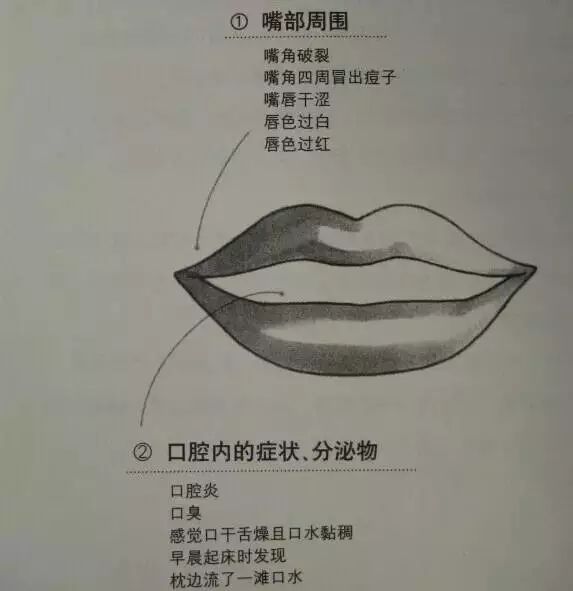
1. Symptoms Around the Mouth
Cracked corners of the mouth — Caused by gastritis leading to false appetite.
Acne around the corners of the mouth — Weak gastrointestinal function.
Dry lips — Increased body temperature can cause dry lips.
Pale lips — Warning sign of insufficient blood.
Red lips — Excessive heat accumulation in the body.
2. Oral Symptoms and Discharges
Oral inflammation — Evidence of reduced immunity.
Bad breath — Can have five causes (active gastritis, indigestion, rhinitis, gum disease, dental plaque).
Feeling dry mouth and thick saliva — General body dehydration.
Finding a pool of saliva by the pillow in the morning — Weak gastrointestinal function.
Tongue
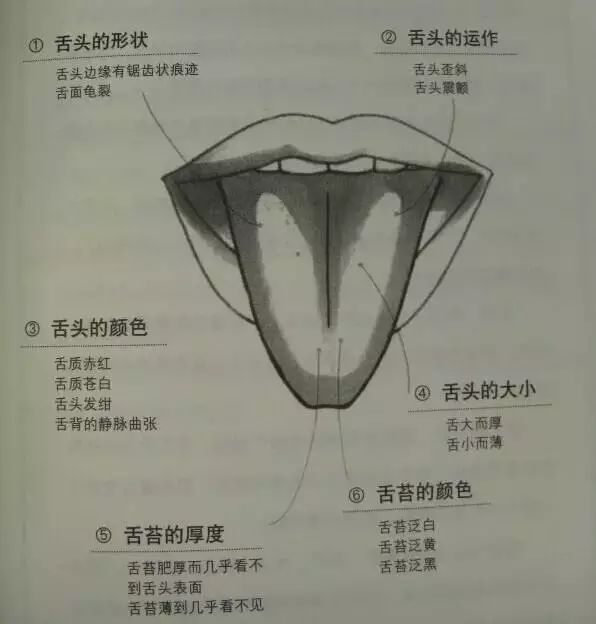
1. Shape of the Tongue
Jagged edges on the tongue — Swelling caused by excessive water retention.
Cracked tongue surface — Insufficient water.
2. Tongue Movement
Slanted tongue — Signal of cerebrovascular disorders.
Trembling tongue — Indicates body weakness.
3. Color of the Tongue
Red tongue body — Elevated body temperature.
Pale tongue body — Weak constitution.
Purple tongue — Signal of overly thick blood.
Varicose veins on the tongue — Dangerous signal of poor blood flow.
4. Size of the Tongue
Large and thick tongue — Excessive water retention in the body.
Small and thin tongue — Insufficient water in the body.
5. Thickness of the Tongue Coating
Thick tongue coating, almost obscuring the tongue surface — Gastrointestinal disorders or serious diseases.
Thin tongue coating, almost invisible — Weak body or allergic constitution.
6. Color of the Tongue Coating
White tongue coating — Low body temperature, reduced body function.
Yellow tongue coating — Indicates internal “heat”.
Black tongue coating — Indicates extreme physical exhaustion.
Nose
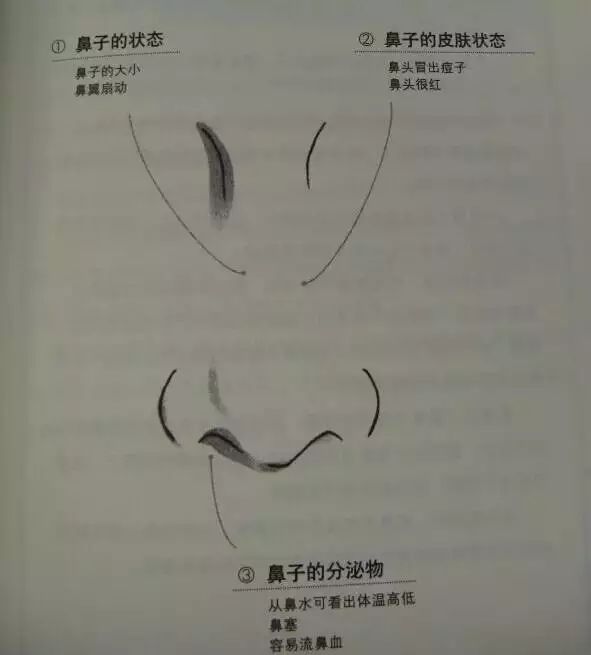
1. Condition of the Nose
Nose size — Strength of respiratory function.
Nostrils flaring — Difficulty in breathing.
2. Skin Condition of the Nose
Acne on the nose tip — Possible respiratory issues.
Red nose tip — Signal of excessive alcohol consumption.
3. Nasal Discharges
Nasal discharge can indicate body temperature — Treatment of colds varies based on type of nasal discharge.
Nasal congestion — If ignored, it can lead to systemic hypoxia.
Frequent nosebleeds — Often caused by weak gastrointestinal function.
Cheeks
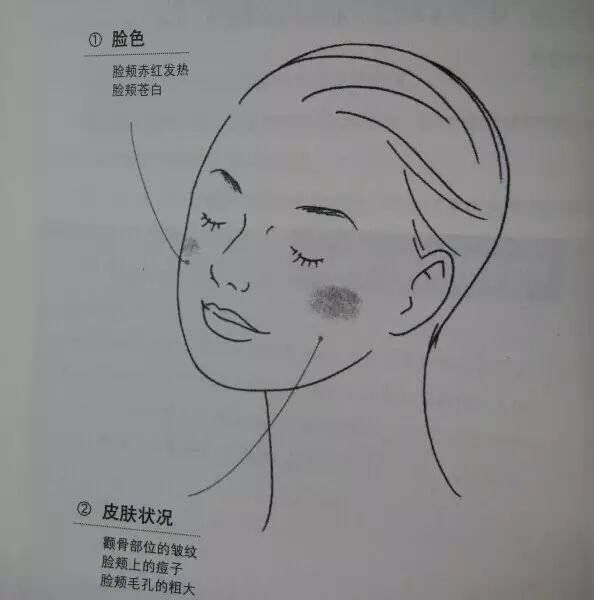
1. Complexion
Red and hot cheeks — Abnormal body temperature regulation.
Pale cheeks — Insufficient oxygen supply in the body.
2. Skin Condition
Wrinkles on the cheekbones — Primarily caused by UV exposure.
Acne on the cheeks — Pay attention to diet excess or constipation.
Enlarged pores on the cheeks — Reduced sebum is the main cause of enlarged pores.
Teeth
1. Condition of the Teeth
Prone to cavities — Early sign of osteoporosis.
Gray teeth — Indicates cavities forming inside the teeth.
2. Condition of the Gums
Swollen gums — Gastritis or fatigue.
Gums prone to bleeding — Gum inflammation or weak gastrointestinal function.
Hair
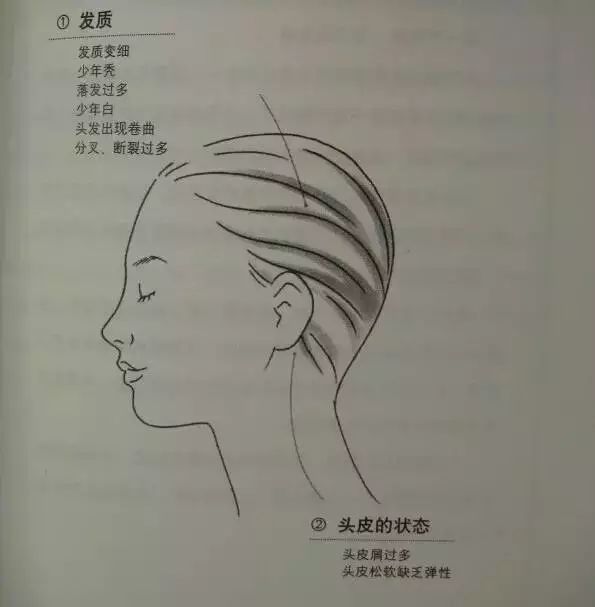
1. Hair Quality
Thinning hair — Tendency towards anemia or aging.
Juvenile baldness — Excessive fat intake can deplete hair (reproductive organ decline).
Excessive hair loss — Hair loss can indicate early signs of disease.
Premature graying — Relationship between calcium and hair.
Curly hair — Indicates thinning hair quality.
Excessive split ends and breakage — Menstruation can cause hair anemia.
2. Condition of the Scalp
Excessive dandruff — Divided into “dry” (iron and protein supplementation) and “oily” (improving fat metabolism, supplementing Vitamin B) types.
Soft and lacking elasticity scalp — Indicates swelling symptoms.
Nails
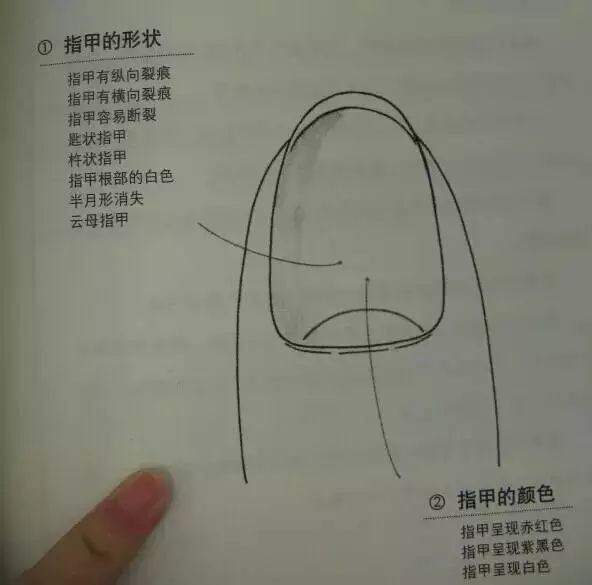
1. Shape of the Nails
Vertical cracks in the nails — “Wrinkles” formed by aging.
Horizontal cracks in the nails — Indicate records of “past” (body discomfort).
Nails prone to breakage — Anemia or poor liver function.
Spoon nails — Body’s distress signal (severe anemia, uterine fibroids, endometriosis; detailed examination recommended).
Clubbing nails (feeling of pressure deformation) — Common in individuals with heart disease.
Disappearance of the white crescent at the nail base — Physical decline.
Dry nails — Indicate dryness of the nails.
2. Color of the Nails
Red nails — Indicates overly thick blood (pay attention to cardiovascular health).
Purple-black nails — Indicates turbid blood or poor heart function.
White nails — Tendency towards anemia.
Note:This account aims to promote TCM culture; the TCM knowledge mentioned is for learning and exchange purposes only.
Source: Comprehensive Knowledge of Chinese Herbal Medicine
End

[Disclaimer: We respect originality, and our main purpose is to share information. All images are sourced from the internet, and copyright belongs to the original authors. If your rights are infringed, please inform us promptly, and we will delete it within 24 hours.] Contact number: (0316)2206011

